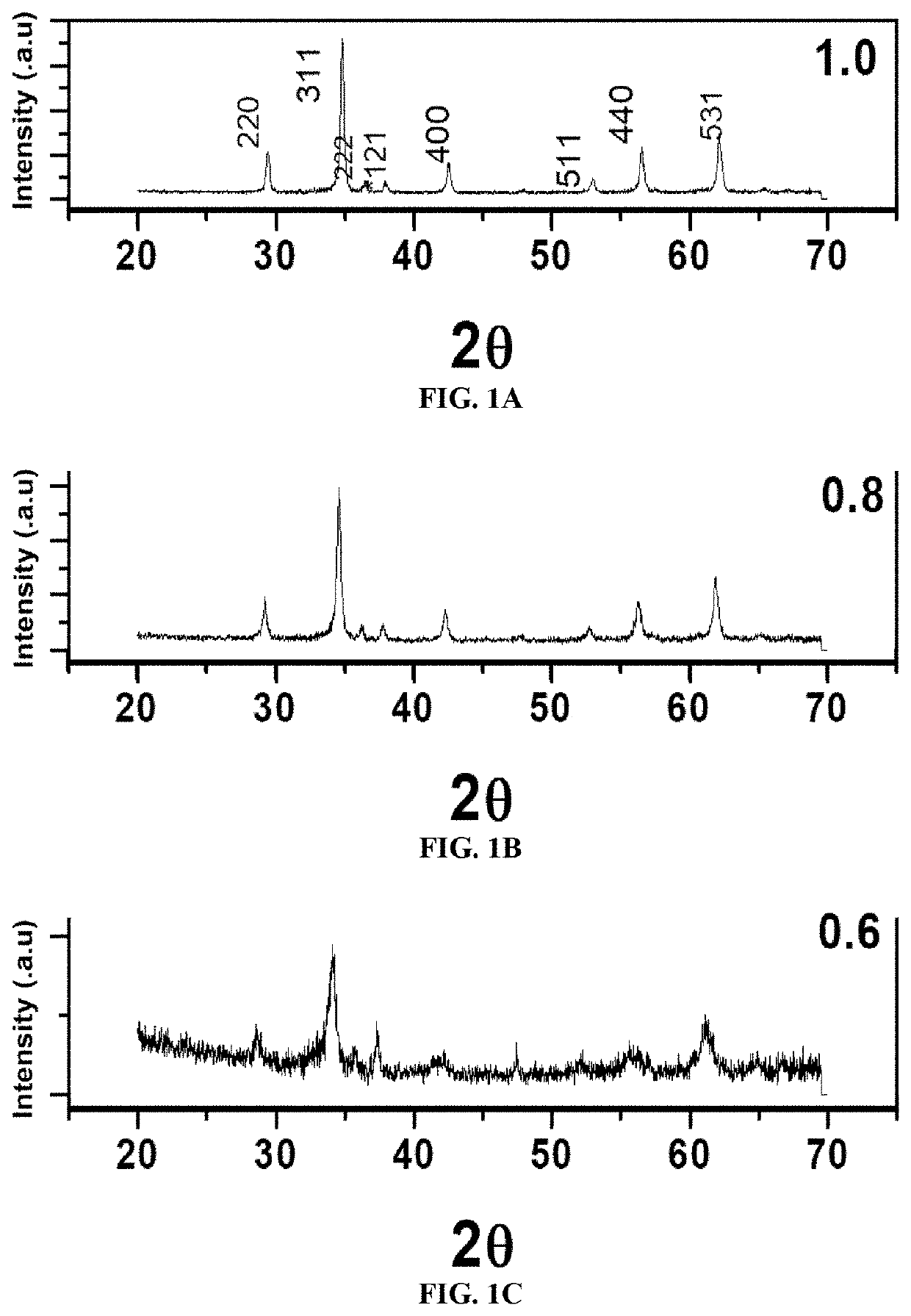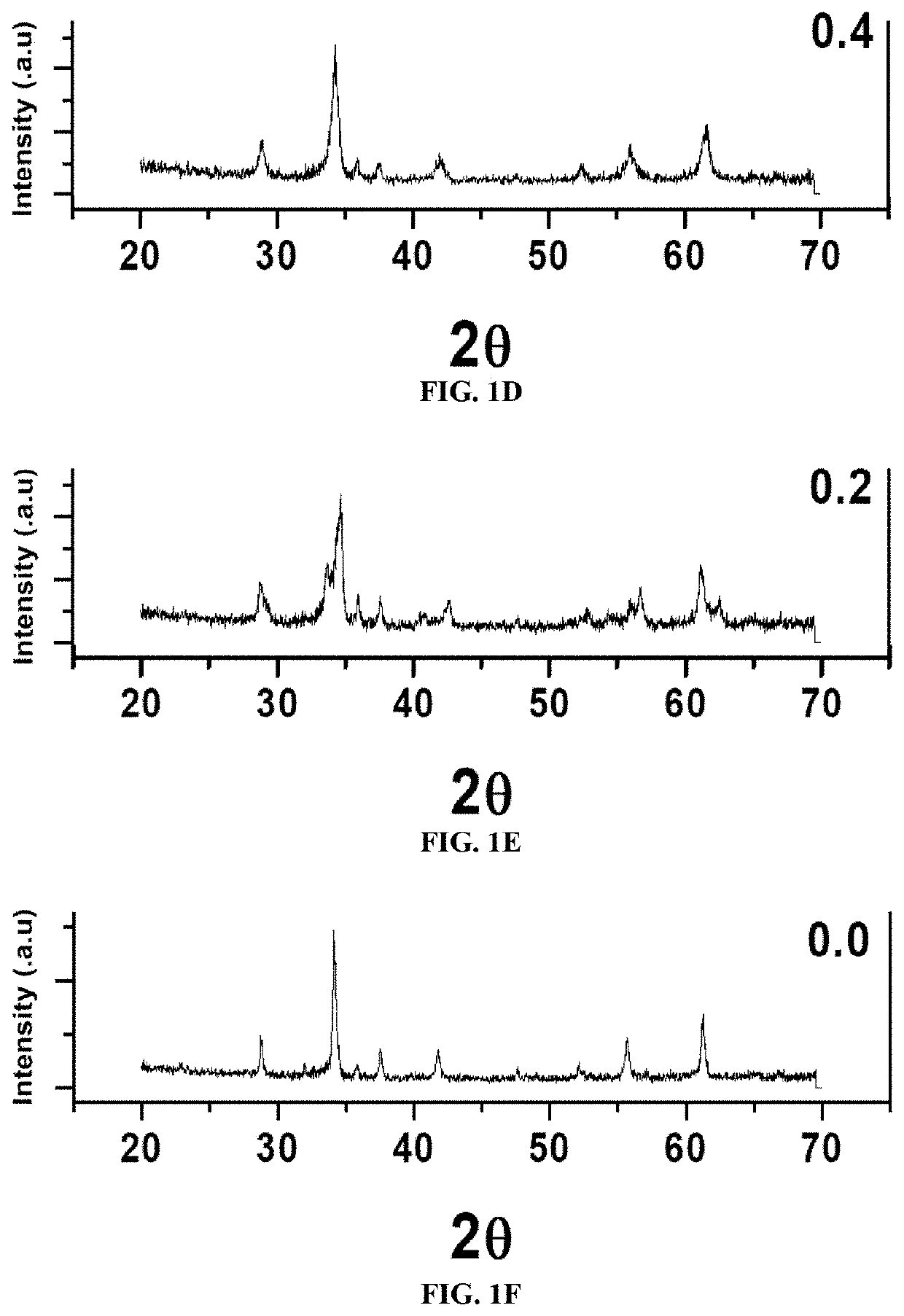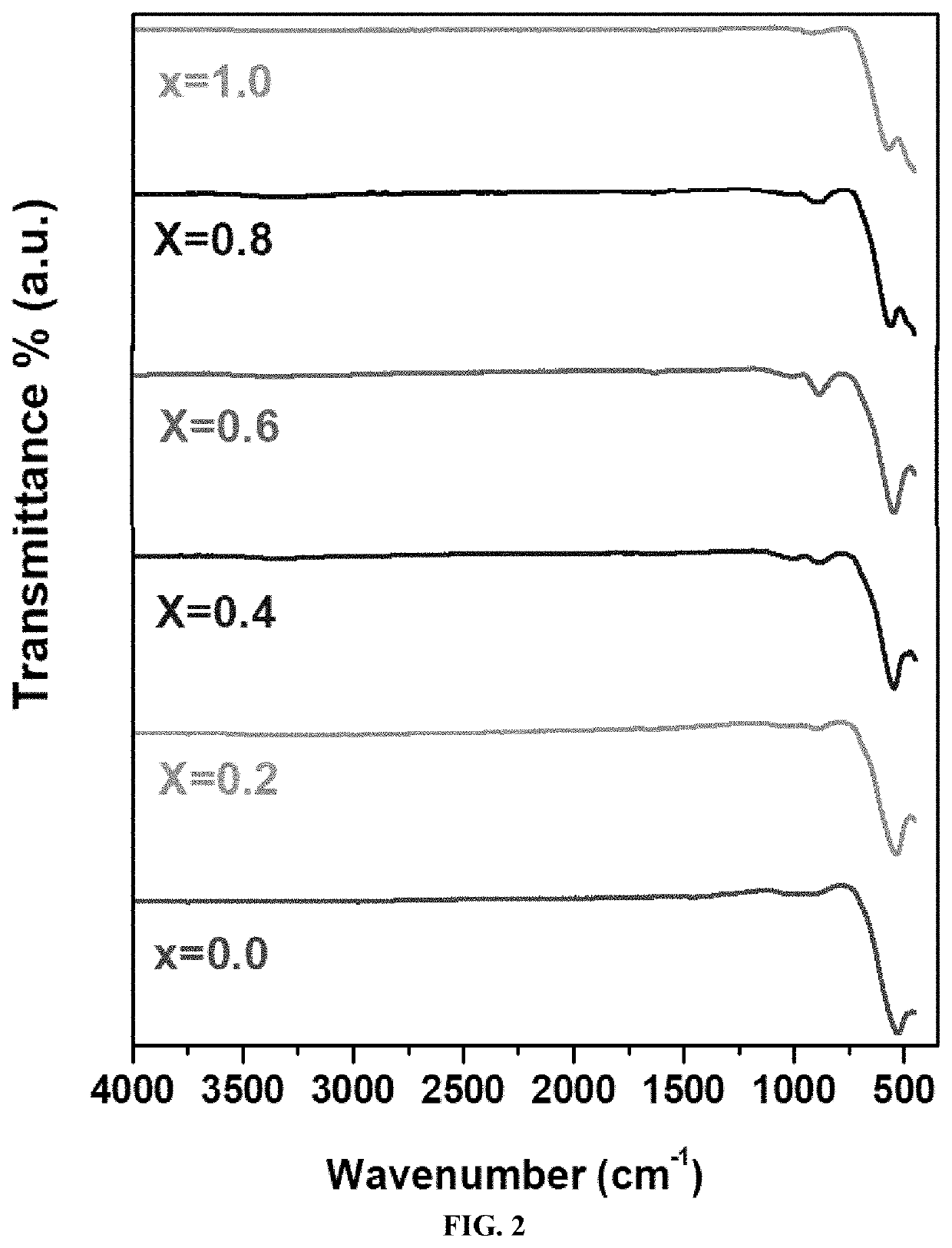Method of making chromium-substituted spinel ferrite nanoparticles for microbe treatment
- Summary
- Abstract
- Description
- Claims
- Application Information
AI Technical Summary
Benefits of technology
Problems solved by technology
Method used
Image
Examples
example 1
[0107]Synthesis of chromium-substituted copper ferrite nanoparticles Chromium-substituted copper ferrite nanoparticles with a chemical composition of CuCrxFe2-xO4, where x=0.0, 0.2, 0.4, 0.6, 0.8 and 1.0, were prepared by co-precipitation method using copper(II) nitrate pentahydrate (Cu(NO)2.5H2O), chromium(II) chloride hexahydrate (CrCl2.6H2O), iron nitrate (Fe(NO3)), and sodium hydroxide (NaOH) as precursor reagents. The precursor materials were dissolved in 100 mL distilled water by applying a constant stirring for 40 min at a temperature of 80° C. The pH of the reaction mixture was maintained at 11 using NaOH. The precipitation process was continued for 3 h at 130° C. and then the reaction mixture was dried by heating at 70° C. for 6 h. Finally, all the synthesized products were annealed by heating at 400° C. for 4 h.
example 2
[0108]The phase and crystallographic analysis of synthesized ferrite nanoparticles were carried out using CuKα radiation (Δ=1.514 Å) with an XRD equipment built by Rigaku D / Max-IIIC Diffractometer (Japan). The crystalline size of each composition was calculated using Sherrer's formula [Ansari M A, Khan H M, Khan A A, Sultan A, Azam A. Synthesis and characterization of the antibacterial potential of ZnO nanoparticles against extended-spectrum δ-lactamases-producing Escherichia coli and Klebsiella pneumoniae isolated from a tertiary care hospital of North India. Applied microbiology and biotechnology. 2012; 94(2):467-77]. The experimental lattice parameter (a) was calculated using the formula described by Klug et al. [Klug H P, L. E. Alexander, X-ray Diffraction Procedures For polycrystalline and Amorphous Materials, John Wiley & Sons, Inc., New York, 1954, L. Lutterotti, P. Scardi, J. Appl. Crystallogr. 1990 23:246-252].
[0109]X-ray density, apparent density, p...
example 3
[0111]X-Ray Diffraction Analysis of Synthesized CuCrxFe2-xO4 (0.0≤x≤1.0) Nanoparticles (NPs)
[0112]X-ray diffraction patterns of synthesized CuCrxFe2-xO4 (0.0≤x≤1.0) NPs were analyzed using powder-X software (FIGS. 1A-F). The most intense reflection peak (311) was observed at 34.8″, which is a characteristic peak of spinel phase. Further, the peaks (220). (311), (222), (400), (511), (440), and (531) indicate the presence of a cubic spinel phase with the space group Fd3m (Samavati A, Ismail A F. Antibacterial properties of copper-substituted cobalt ferrite nanoparticles synthesized by co-precipitation method. Particuology. 2017; 30:158-63; and Ashour A H, El-Batal A I, Abdel Maksoud M I A, El-Sayyad G S, Labibc S, Abdeltwab E, El-Okr M M. Antimicrobial activity of metal-substituted cobalt ferrite nanoparticles synthesized by sol-gel technique. Particuology. 2018; volume 40, pages 141-151, each incorporated herein by reference in their entirety]. The estimated crystallite sizes obtaine...
PUM
 Login to View More
Login to View More Abstract
Description
Claims
Application Information
 Login to View More
Login to View More - R&D
- Intellectual Property
- Life Sciences
- Materials
- Tech Scout
- Unparalleled Data Quality
- Higher Quality Content
- 60% Fewer Hallucinations
Browse by: Latest US Patents, China's latest patents, Technical Efficacy Thesaurus, Application Domain, Technology Topic, Popular Technical Reports.
© 2025 PatSnap. All rights reserved.Legal|Privacy policy|Modern Slavery Act Transparency Statement|Sitemap|About US| Contact US: help@patsnap.com



